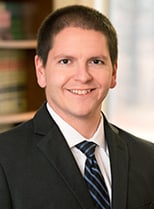Tyler Smith obtained a hung jury in an OUI trial with a .15 BrAC, leading to a dismissal of the OUI charge against the firm’s client.
The client was stopped for running a stop sign. The officer administered the three standardized field sobriety tests and the lack of convergence test. He then arrested the client, brought the client to the police station, and administered a breath test on an Intoxilyzer 8000. The client tested at .15 BrAC—nearly twice the legal limit.
Before the trial started, the defense filed a motion to exclude the lack of convergence as lacking any scientific basis. The judge granted the motion.
At trial, the State called two witnesses: the arresting officer and the Breath Testing Administrator at the Maine Health and Environmental Testing Laboratory, who testified as an expert witness for the State. The defense did not call any witnesses.
On cross-examination, the defense used the arresting officer’s OUI enforcement training materials to establish that the client’s performance throughout the OUI investigation was inconsistent with that of an impaired driver, especially a person with a .15 BrAC. The cross-examination walked the officer and the jury through the three phases of an OUI investigation, explained how alcohol impairs a person’s ability to divide their attention or perform fine motor tasks, and caused the officer to admit that many of the “cues” or “clues” officers are trained to look for in impaired drivers were absent.
The defense also attacked the reliability of the breath test. Officers administering a breath test are required to perform a 15-minute observation period. During that period, the officer must be assured that the driver does not burp, belch, or regurgitate. Any of these actions during the 15 minutes preceding the breath test creates a risk that the breath test result will be contaminated by residual mouth alcohol or stomach vapors.
The evidence established that the client cleared his throat twice during the observation period. Although both the State’s expert and the officer testified that clearing one’s throat will not interfere with a breath test, the defense argued (1) people often clear their throat to mask a burp or other gastric event, and (2) the fact that the client cleared his throat was a red flag that something might have entered his esophageal area, which the officer may not have noticed.
The jury remained deadlocked after six hours of deliberations, resulting in a hung jury and mistrial. The State later dismissed the charge.

